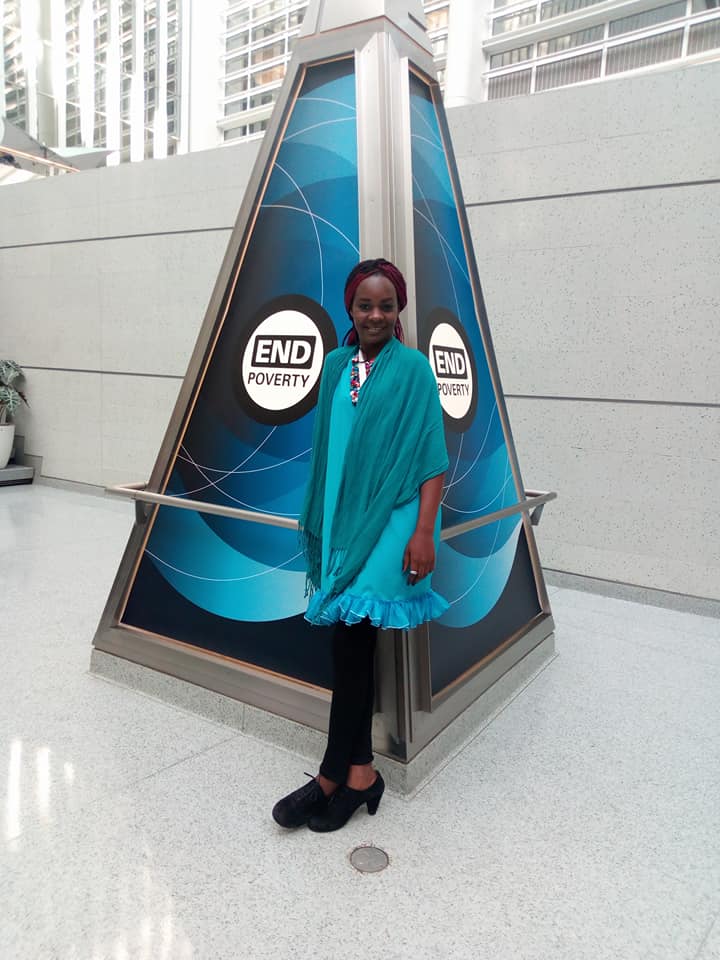 Canadian Marshall McLuhan (1911-1980), the renowned public intellectual from the department of culture and technology at the University of Toronto. Known for coining the expressions “the medium is the message” and the global village, and for predicting the World Wide Web almost thirty years before it was invented. He was the first major communications theorist of how the new media have the power to transform human nature -Interview with John Lennon, Toronto 1969…..
Canadian Marshall McLuhan (1911-1980), the renowned public intellectual from the department of culture and technology at the University of Toronto. Known for coining the expressions “the medium is the message” and the global village, and for predicting the World Wide Web almost thirty years before it was invented. He was the first major communications theorist of how the new media have the power to transform human nature -Interview with John Lennon, Toronto 1969…..
Marshall McLuhan:
Language is a form of organized stutter and literally you chop up your sounds into bits in order to talk. And when you sing, you don’t stutter. Singing is a way of stretching language into long harmonious patterns and cycles. So how do you think about language and song?
John Lennon:
Language and song to me, apart from being pure vibration, is just like trying to describe a dream, and it’s because we don’t have telepathy, or whatever it is we want, that we try to describe the dream to each other, to verify what we know, what we believe is inside each other. And the stuttering is right because we can’t say it, however you say it, is never how you want it.
My references to the work of Marshall McLuhan were sourced from the Internet, with no particular author to cite other than McLuhan himself. The work of McLuhan goes to the heart of what I believe will be Canada’s leading role in not just the future of global 21st Century sustainability, but in that vital and relevant connection between Government and civil society, thereby fulfilling universal action for peace and all things good.
The Russian-born Canadian citizen, Dr. Tamara Lavrovskaia, is working with key UNESCO officials on the future UNESCO project that she founded and has tenaciously brought to fruition over the past 13.5 years. Dr. Lavrovskaia’s team will work towards the realization of the above global vision, led and driven by international interdisciplinary innovative experts, ranging from Canada’s visionary Kerry Adler, CEO of Skypower, to UN Global Compact and UN Academic Impact partner, Energime University.
As related on SkyPower’s website, “SkyPower is the largest and one of the most successful developers and owners of utility-scale solar energy projects in the world. With roots dating back more than a dozen years, SkyPower’s global team possesses a vast track record of over 900 years of combined experience in power and large infrastructure projects.
The experienced and accomplished SkyPower team has built, assembled and acquired an extensive pipeline of over 25 GW worldwide – 9 GW of which were recently announced in bilateral agreements, and other contract awards, to be built in the Middle East, Africa and South Asia over the next five years.”
Energime University offers a global education platform to provide one such interface between civil society, civil diplomacy, and leading institutions.
To quote Energime founder/director, Professor Bill Sosinsky, “Energime University has as our mission the creation of the world’s largest interactive education and training platform primarily dedicated to advancing sustainable food, water, energy and waste management practices throughout our global population. We are a charitable not-for-profit organization with extensive networking and technical capabilities. Our intent is to bring balance back to our use of finite global resources and to limit and eliminate human impact on our fragile environment. Energime University is doing this by offering education and skills training taught by some of the most esteemed and knowledgeable experts in the world. Our course curriculum focuses on supporting economic development that manages local resources while promoting environmental stewardship and global collaboration/cooperation.”
Bill Sosinsky appointed my mother, Liz Greenwell Executive Professor at Energime University, and Executive Director of Global Social Development Initiatives for the Energime Family of Companies.
Like John Lennon – and in later years, Sir Bob Geldof and Bono – the Irish-born Professor Greenwell has globally applied the pre-Tudor Brehon Laws of Ireland, regarded by scholars as the best system of jurisprudence in the ancient world. Jurisprudence meaning “the study, knowledge, or science of law.”
The Brehon Laws had a simple focus: The magistrate and the minstrel – (and writer/poet) – collaborate closely for the betterment of the community.
On that count, it is worth noting that the first global leader to meet John Lennon was Pierre Trudeau, Canada’s transformative and third longest-serving Prime Minister.
Assistant Professor Randy Boswell, School of Journalism and Communication, Carleton University, and 2010 winner of the Yves Fortier Earth Science Journalism Award, has written of Lennon’s scheduled ten-minute meeting with Trudeau in Ottawa that turned into a warm, 50-minute conservation fondly recounted decades later in Trudeau’s 1993 memoir:
“I was pleased to receive (John Lennon and Yoko Ono)” Trudeau wrote, adding that the Beatle “was kind enough to say afterwards ‘If all politicians were like Mr. Trudeau, there would be world peace.’ I must say that Give Peace a Chance has always seemed to me to be sensible advice.”
Assistant Prof. Boswell also points out that an original copy of the poster “WAR IS OVER! If you want it” and “Happy Christmas from John & Yoko” is counted among the most coveted artifacts held today by the Canadian Museum of Civilization and Canadian War Museum.
Back to Marshall McLuhan. It is worth noting the parallels between Marshall McLuhan and Nicolas Tesla, given the visionary statements of Tesla Motors CEO Elon Musk. According to Forbes Magazine, “Elon Musk is trying to redefine transportation on earth and in space.” Barely a week ago, Musk proposed that Tesla Motors, the electric car maker, merge with SolarCity, creator of solar panels, to sell solar roof tiles for homes.
Although currently based in Los Angeles, Elon Musk emigrated to Canada from South Africa at the age of seventeen.
McLuhan’s ideas have permeated the way we in the global village think about technology and media to such an extent we are generally no longer aware of the revolutionary effect his concepts had when first introduced. McLuhan made the idea of an integrated planetary nervous system a part of our popular culture, so that when the Internet finally arrived in the global village it seemed no less amazing, but still somehow in the natural order of things.
Marshall McLuhan predicted the global village, one world interconnected by an electronic nervous system, making it part of our popular culture before it actually happened.
Marshall McLuhan was the first person to popularize the concept of a global village and to consider its social effects. His insights were revolutionary at the time, and fundamentally changed how everyone has thought about media, technology, and communications ever since. McLuhan chose the insightful phrase “global village” to highlight his observation that an electronic nervous system (the media) was rapidly integrating the planet — events in one part of the world could be experienced from other parts in real-time, which is what human experience was like when we lived in small villages.
While McLuhan popularized this concept, he was not the first to think about the unifying effects of communication technology. One of the earliest thinkers along this line was Nicolas Tesla, who in an interview with Colliers magazine in 1926 stated: “When wireless is perfectly applied the whole earth will be converted into a huge brain, which in fact it is, all things being particles of a real and rhythmic whole. We shall be able to communicate with one another instantly, irrespective of distance. Not only this, but through television and telephony we shall see and hear one another as perfectly as though we were face to face, despite intervening distances of thousands of miles; and the instruments through which we shall be able to do his will be amazingly simple compared with our present telephone. A man will be able to carry one in his vest pocket.”
To conclude, I offer suggestions as to why the city of Toronto is pivotal to Canada’s emergence in, and realization of, the better world and better society of the twenty-first century and beyond.
Such insights were offered by a Spiritual Elder who is also a financier and analyst. He directed me to the List of Recent Climate Funding Announcements, whereby Canada has allocated CAD 2.65 billion over the next five years in international climate finance to support a transition to low-carbon economies. As the 2016 State of Food and Agriculture report, published by the Rome-based Food and Agriculture Organisation (FAO),warned: Up to 122 million more people worldwide could be living in extreme poverty by 2030 as a result of climate change and its impacts.
In the same way that Sir James Frazer’s breakthrough work of anthropology, The Golden Bough, attempts to define the shared elements of religious belief and scientific thought; my Spiritual Elder friend points to the Yorkville Rock in the center of Toronto, and its connection to the prophecy of the Eagle and the Condor.
The Yorkville Rock is a billion-year-old granite, weighs 650 tons, and represents an ancient glacial mountain range, the Pre-Cambrian Canadian Shield. The rock was brought into Toronto’s Village of Yorkville Park piece by piece and sits atop structural beams that cover the roof of the subway. The placing side-by-side of ancient rock and modern rail exemplify what is seen as the fulfillment of a five-hundred-year prophecy of the Eagle and the Condor. Originating with the Incas, the Eagle and the Condor prophecy is known to indigenous peoples worldwide – including the Maori of New Zealand, where I am located – but especially North and South America.
The prophecy sees the ushering in of an era of peace and harmony, once the Eagle of the North and the Condor of the South “fly together.” Like any prophecy, this one is as open to interpretation as any. But it certainly offers a significant, and very hopeful, signpost for the human family’s collective journey.
Dr. Martin Luther King Jr wrote in Strength to Love, that “life at its best is a creative synthesis of opposites in fruitful harmony.”
That creative synthesis, that sense of life at its best, could be reflected for all in the reconciliation of the Eagle and the Condor.
Harmony and balance between opposites – commerce and creativity, spirituality and science, East and West, faith and reason, modern technology and ancient wisdom, Yin and Yang, unity and diversity, self and other, peace and prosperity, humanity and the environment – the list goes on as the dream awakens.
In the Global Village, I believe that Canada will be the Campfire around which Songs of Sustainability will be sung, as the Eagle and Condor fly above it all – together.
Adam Greenwell
November 9, 2016 – New Zealand Time, the US Presidential Elections still proceeding on November 8, in the USA.




